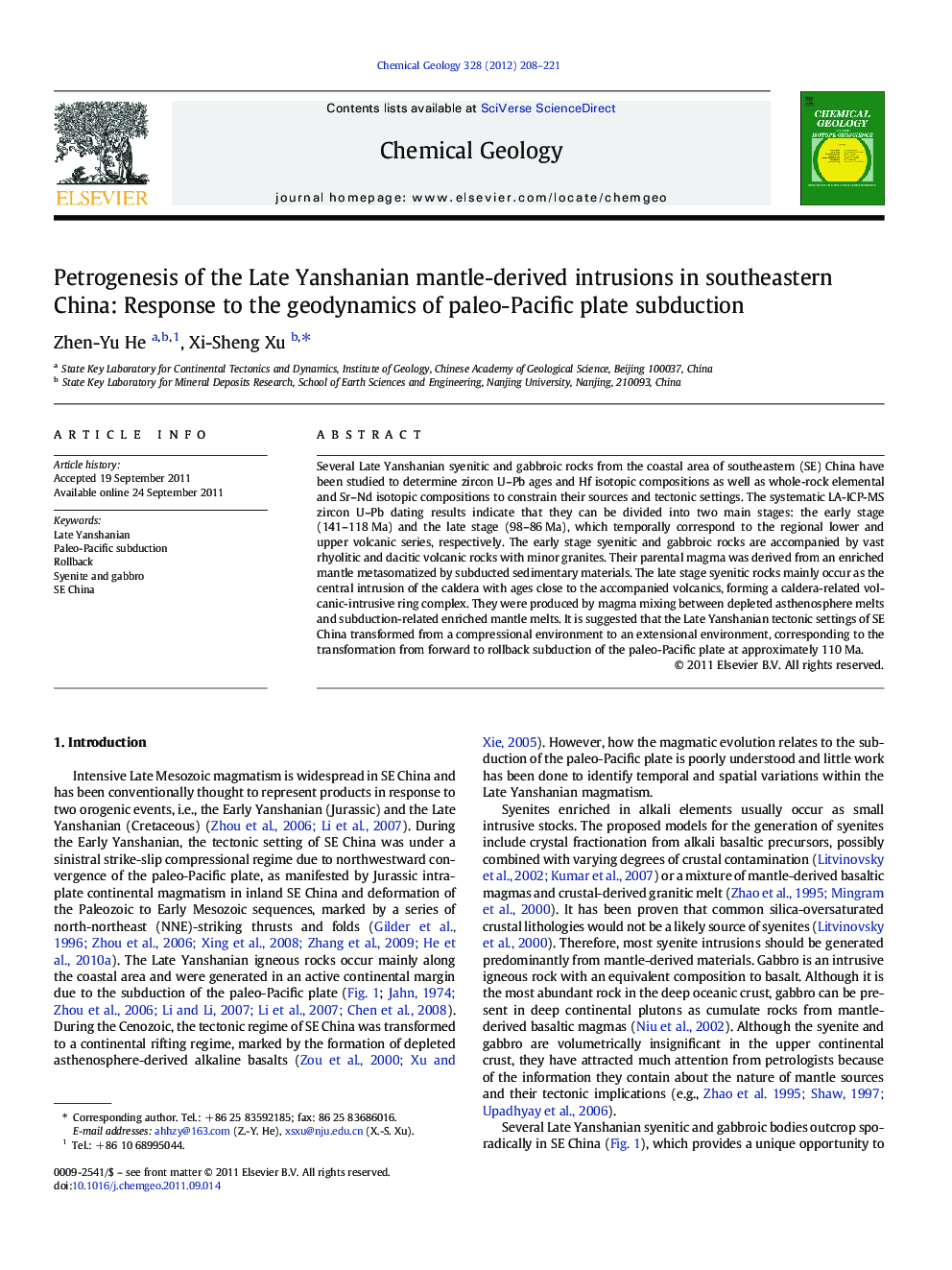| Article ID | Journal | Published Year | Pages | File Type |
|---|---|---|---|---|
| 4699304 | Chemical Geology | 2012 | 14 Pages |
Several Late Yanshanian syenitic and gabbroic rocks from the coastal area of southeastern (SE) China have been studied to determine zircon U–Pb ages and Hf isotopic compositions as well as whole-rock elemental and Sr–Nd isotopic compositions to constrain their sources and tectonic settings. The systematic LA-ICP-MS zircon U–Pb dating results indicate that they can be divided into two main stages: the early stage (141–118 Ma) and the late stage (98–86 Ma), which temporally correspond to the regional lower and upper volcanic series, respectively. The early stage syenitic and gabbroic rocks are accompanied by vast rhyolitic and dacitic volcanic rocks with minor granites. Their parental magma was derived from an enriched mantle metasomatized by subducted sedimentary materials. The late stage syenitic rocks mainly occur as the central intrusion of the caldera with ages close to the accompanied volcanics, forming a caldera-related volcanic-intrusive ring complex. They were produced by magma mixing between depleted asthenosphere melts and subduction-related enriched mantle melts. It is suggested that the Late Yanshanian tectonic settings of SE China transformed from a compressional environment to an extensional environment, corresponding to the transformation from forward to rollback subduction of the paleo-Pacific plate at approximately 110 Ma.
Graphical abstractFigure optionsDownload full-size imageDownload as PowerPoint slideHighlights► The Late Yanshanian magmatism could be divided into two major stages. ► The early stage syenitic and gabbroic rocks were generated from an enriched mantle. ► Significant asthenospheric mantle has contributed to the late stage magmatism. ► Conversion from forward to rollback subduction at approximately 110 Ma.
